Dynamic regions at heart of planning
At last week’s meeting between the Ministry of Planning and Investment (MPI) and experts from World Bank Group (WB), former WB vice president Danny Leipziger highlighted the role of economic zones in Vietnam’s master planning for the rest of the decade. “These dynamic regions will be the key for Vietnam to become a high-income country, as centralised economic activities improve productivity and stimulate innovation,” he said.
In all countries, clusters of economic zones are the engines of growth such as the Silicon Valley, the Pearl River Delta, and Paris. Leipziger emphasised that over-spread investment could reduce economic yields and slow down Vietnam’s progress to become a high-income country.
“But the dynamic economic region is only effective if it is supported by institutions and mechanisms to promote cooperation among localities. Since then, the zone can fully exploit the benefits of scale and concentration of the economic efficiency, and complement each other,” added Leipziger.
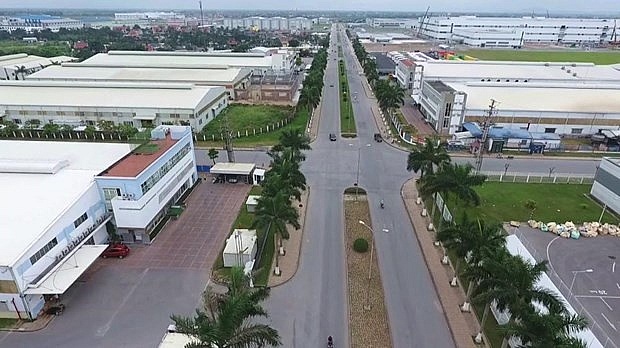 |
| Dynamic regions at heart of planning- Illustrative image (Photo: Internet) |
In fact, the Vietnam Chamber of Commerce and Industry (VCCI) has initiated to strengthen the links between the four northern provinces of Haiphong, Quang Ninh, Hai Duong, and Hung Yen following the eastern expressways to form a vibrant economic growth centre of the Red River Delta region.
In the view of the VCCI, these four provinces with good performance in foreign investment attraction would mobilise investment for the whole region instead of a single locality.
Therefore, WB experts expect that the dynamic regions in the country’s master plan would offer positive effects to the whole country. These regions encourage people to immigrate from other regions and localities, which is a natural phenomenon of urbanisation for people to improve their livelihoods.
“The dynamic regions will enhance the connectivity of all localities to various regions, being one way to improve market access and creating the necessary conditions for positive spillovers to take place,” Leipziger said. He added that investing in people by providing basic public education and services to all areas is the best way to develop and strengthen links.
According to the draft of the country’s master plan, based on the major economic regions, there will be cores and poles of growth. Specifically, in the northern major economic region, the core of growth is the triangle of Hanoi, Haiphong, and Quang Ninh, and the pole is Hanoi. In the southern region, the core of growth is the quadrilateral of Binh Duong, Dong Nai, Ba Ria-Vung Tau, and Ho Chi Minh City, with the latter the pole in this set-up.
The master plan also pointed out economic corridors in all directions based on the transport systems of highways, and railways, as well as connecting cities, seaports, airports, and border gates to major economic regions and growth poles.
José Luis Irigoyen, senior director of the WB’s Transport and ICT Global Practice, took the example of China’s National Territory Spatial Planning. Irigoyen said that the dynamic urban regions are formed based on special economic areas and the opening of cities along the east coast, leading to the emergence of three large urban regions with high population density: the Pearl River Delta, the Yangtze River Delta, and the Beijing-Tianjin-Hebei region.
“The three major metropolitan areas contribute nearly 45 per cent of China’s GDP, most of China’s modern industrial output, and 70 per cent of China’s exports. Those cities have focused a lot on research and development, innovation, starting new businesses, and driving GDP growth,” said Irigoyen.
He also highlighted some determinants of the result of the dynamic regions. “In China, they have been generating spillover effects like the rapid increase in incomes in the dynamic regions and neighbouring localities through infrastructure connectivity and labour demand. Overall, prosperity is shared across the country, but regional income gaps persist, while rapid industrialisation and urbanisation are also responsible for environmental degradation, pollution, and congestion in cities,” Irigoyen said.
| Industrial zone planning complexities hindering progress in attracting foreign capital The barriers to approving industrial zone planning include congestion for investors to expand operations in Vietnam, with plenty of examples being felt in the southern province of Dong Nai. Tran Thi Thu Huong, deputy general director of Long Duc Industrial Park (IP), told VIR that the company is anxious to know when the planning of Long Duc 3 IP will be approved. “The company is expected to become the investor of Long Duc 3. The demand for expanding operations is large, and the existing industrial zones (IZs) in the province are almost filled. It has been a long time since the province opened any new IZs,” Huong said. The 244.5-hectare Long Duc 3 is one of three in the southern province of Dong Nai facing difficulties in approving the planning, along with Bau Can-Tan Hiep (2,620ha) and Xuan Que-Song Nhan (3,600ha). According to Pham Van Cuong, deputy director of Dong Nai Industrial Zones Management Authority, the fulfilment ratio in existing IZs is 82 per cent. Thus, in 2020 the prime minister allowed the province to add five IZs with a total area of 7,100ha into the planning, although the aforementioned three have yet to have planning actually approved. At the end of this July, the Ministry of Planning and Investment submitted to the government the investment planning for the three projects. In the above document it was stated that, according to the provisions of Article 31 of the Law on Investment, the decision on funding in IZ projects falls under the authority of the prime minister. Cuong said that the problem is that in approved national sector planning, they do not combine the planning of Bau Can-Tan Hiep, Xuan Que-Song Nhan, and Long Duc 3 in Dong Nai. Besides that, the province’s planning according to the law has not been approved and the list of projects attached to the planning does not include the three IZ projects. “In recent times, the province has missed out on many large foreign-invested projects due to failure to meet the demand for land. The demand for investment is also reinforced since the construction of Long Thanh International Airport kicked off. To grasp these opportunities, the province has asked the government to approve the development of three zones,” Cuong said. Danish jewellery brand Pandora previously arrived in Dong Nai to survey and rent land in Long Thanh IP to build a new jewellery crafting facility. It is hoped the facility would boast a capacity of 60 million units per year, accounting for 30 per cent of the company’s entire facilities. But due to a lack of land, the province was forced to ask the investor to wait for a long time for access to land, leading the investor to move the project to Binh Duong province instead. Huong of Long Duc added that company leaders are now busy with meetings with investors who want to study opportunities in the province. “Many manufacturers here are simply waiting for the opening of Long Duc 3 IP to extend their investment,” Huong said. In the first seven months of this year, the province attracted $524 million in newly-registered capital and added capital, equal to 49 per cent on-year. |
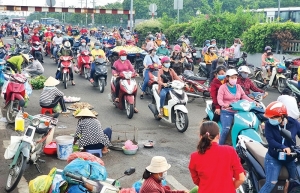 | Industrial zone workers: realities in low-quality living quarters Vietnam currently has 260 industrial zones in operation, with 75 more being planned, for over 16 million workers that generate massively for the country’s GDP. Industrial zone and social housing developers currently only meet less than 10 per cent of the demand, with other workers forced to rent in low-quality, dark, and humid hostels. Developing social housing and housing for workers and ensuring socioeconomic development and quality of life, therefore, is deemed an urgent mission for both local authorities and industrial zone owners. |
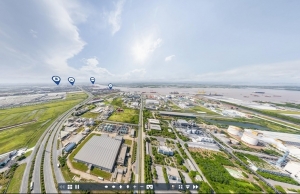 | Domestic suppliers backing up foreign manufacturers Becoming a magnet for global tech groups will help Vietnam woo more industrial manufacturers to expand operations in the country. |
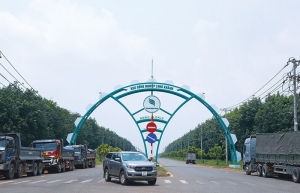 | Flurry of activity for industrial players The appearance of big names and new large-scale projects have brought positive signals to the growth of industrial property, amid the sharp increase in rent prices in industrial zones. |
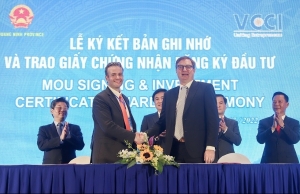 | DEEP C IZs in Quang Ninh prepared for hefty funding flow Over $1.5 billion is being committed for DEEP C Industrial Zones in the northern province of Quang Ninh thanks to a couple of new deals. |
What the stars mean:
★ Poor ★ ★ Promising ★★★ Good ★★★★ Very good ★★★★★ Exceptional
Related Contents
Latest News
More News
- EVN launches major power infrastructure projects nationwide (December 19, 2025 | 18:17)
- VAL inaugurates second production line to meet domestic animal feed demand (December 19, 2025 | 16:37)
- Sun Group pioneers urban tram system in Phu Quoc (December 19, 2025 | 15:00)
- Seven major projects launched to drive Hanoi’s next growth phase (December 19, 2025 | 14:00)
- Securing capital and efficiency for Vietnam’s 2026-2030 growth ambitions (December 17, 2025 | 10:00)
- Vietnam bucking trend in the global M&A landscape (December 16, 2025 | 14:20)
- HDS Summit spotlights Vietnam’s rising role in regional supply chains (December 16, 2025 | 08:00)
- Kolon signs $48 million airbag supply deal with Autoliv (December 15, 2025 | 18:14)
- National Assembly approves Vinh–Thanh Thuy expressway project (December 15, 2025 | 18:02)
- Quang Tri green-lights $1.59 billion LNG-fired power project (December 15, 2025 | 17:59)

 Tag:
Tag:






















 Mobile Version
Mobile Version